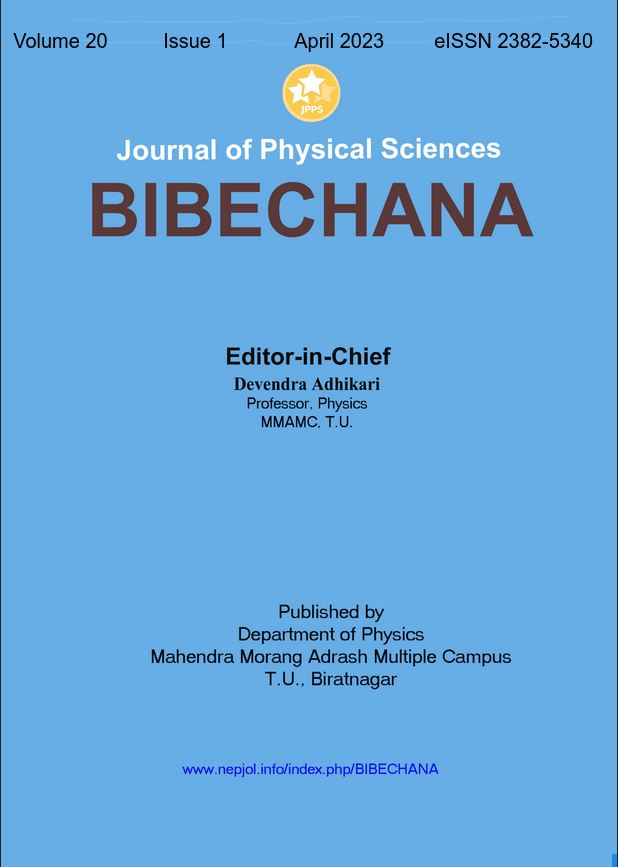Porous activated carbon materials from Triphala seed stones for high-performance supercapacitor applications
DOI:
https://doi.org/10.3126/bibechana.v20i1.53432Keywords:
Triphala seed chemical activation, zinc chloride, nanoporous, electrochemical measurement, super-capacitorAbstract
Porous activated carbon materials derived from biomass could be the suitable materials for high-rate performance electrochemical supercapacitors as it exhibits high surface area due to well-defined pore structure. Here, we report the novel porous activated carbon from Triphala seed stones by chemical activation with zinc chloride at different carbonization temperature (400-700 °C) under the nitrogen gas atmosphere. The activated carbon was characterized by Fourier transform-infrared (FTIR) spectroscopy, Raman scattering and scanning electron microscopy (SEM). Nitrogen adsorption-desorption measurements was used to study the surface properties (effective surface areas, pore volumes and pore size distributions). The electrochemical measurements were performed in an aqueous 1 M sulphuric acid (H2SO4) solution in a three-electrode cell set up. Triphala seed stones-derived porous carbon materials with well-defined micro- and mesopores exhibit high specific surface area ranges from 878.7 to 1233.3 m2 g-1 and total pore volume ranges from 0.439 to 0.626 cm3 g-1. The specific capacitance obtained by electrochemical measurement experiment was 208.7 F g-1 at 1 A g-1. These results indicate that the prepared nanoporous activated carbon material from Triphala seed stones would have significant possibility as supercapacitor electrode material for high-energy-storage supercapacitor applications.
Downloads
Downloads
Published
How to Cite
Issue
Section
License
Copyright (c) 2023 Chhabi Lal Gnawali, Sabina Shahi, Sarita Manandhar, Ganesh Kumar Shrestha, Mandira Pradhannanga Adhikari, Rinita Rajbhandari, Bhadra P. Pokharel

This work is licensed under a Creative Commons Attribution-NonCommercial 4.0 International License.
This license enables reusers to distribute, remix, adapt, and build upon the material in any medium or format for noncommercial purposes only, and only so long as attribution is given to the creator.




